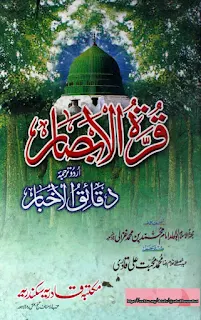Depiction
from the distributer:
Imam
Ghazali's Bidayat al-Hidaya is an exceedingly inspirational manual specifying
the basics of securing direction through God-awareness (taqwa). Imam Ghazali
contends that similarly as there is a conclusion to this honorable target there
is additionally a starting to it, which must be made firm for one to make
progress. He at that point proceeds to clarify the basics of this "starting."
While being succinct and to-the-point the manual is spread out as a definite
day by day timetable giving the peruser solid motivation and much awful
direction. The three segments of this book are on acquiescence, abstaining from
noncompliance, and the decorum of friendship with the Creator and with
creation. One of Imam Ghazali's last works, it epitomizes a lifetime of
learning, background, and otherworldliness and can be taken as a prologue to
his bigger works.
This
interpretation distributed just because with confronting Arabic content
additionally incorporates numerous notes and transliteration for the supplications
contained inside.
"An
astounding interpretation of a significant book on the basics of Muslim
devotion and decorum. With an available English interpretation nearby the first
Arabic content, this initial work will be helpful for perusers keen on
investigating the substances of Islamic devotion, understudies of Arabic and
instructors alike."
Jonathan
air conditioning Brown University of Washington
"This
invited interpretation gives Ghazali's manual The Beginning of Guidance
(Bidayat al-Hidaya) to genuine understudies, searchers, and researchers and
consolidates contemporary familiarity with deference for sacrosanct Islamic
convention."
Marcia
Hermansen Loyola University Chicago
About
the Translator:
Dr.
Mashhad Al-Allaf holds a doctoral certificate in Modern Philosophy: Science and
Metaphysics (1995). His single man's and graduate degrees focused on the
Philosophy of Science. He has instructed at Washington University, St. Louis
University, and Webster University and is the creator of a few works, including
The Basic Ideas and Institutions of Islam (2008), Locke's Philosophy of Science
and Metaphysics (2007), and The Essential Ideas of Islamic Philosophy (2006).
He is the co-creator of the inevitable Islamic Philosophy of Science and Logic
(University of Pittsburgh). His momentum research centers around integrative
investigations and multiculturalism, just as Engineering Ethics, Biomedical
Ethics, Love and Romance in Islam, and Islamic Theory of Science
ISBN: 9781933764061
Creator: Hujjat al Islam Abu
Hamid al Tusi al Ghazali (Imam Ghazali); Mashhad al-Allaf (interpreter)
Distributer: White Thread Press
(Second Edition 2010)
Pages: 172 Binding: Paperback
Urdu
interpretation by Maulana Nadeem al-Wajdi
 Al-Ghazali
(Abū Ḥāmid Muḥammad ibn Muḥammad aṭ-Ṭūsī al-Ġazālī; latinized Algazelus
or Algazel; c. 1058 – 19 December 1111) was one of the
most conspicuous and compelling savants, scholars, legal advisers, and
spiritualists of Sunni Islam. He was of Persian root.
Al-Ghazali
(Abū Ḥāmid Muḥammad ibn Muḥammad aṭ-Ṭūsī al-Ġazālī; latinized Algazelus
or Algazel; c. 1058 – 19 December 1111) was one of the
most conspicuous and compelling savants, scholars, legal advisers, and
spiritualists of Sunni Islam. He was of Persian root.




































